Best gravel bike tyres: Grippy, fast, and durable options for whatever gravel means to you
All the best gravel tyres for dry, intermediate, and wet conditions, as well as all-road options too
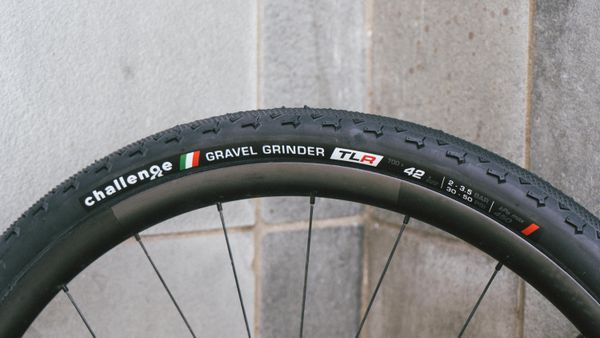
I'd go so far as to say upgrading your gravel tyres is about the most transformative upgrade you can make to a gravel bike. Swapping to the best gravel bike tyres can make you a bit faster, more confident in the corners, or avoid a puncture or two, but making the correct tyre selection for gravel can be the difference between riding and walking in some cases.
I've been testing gravel tyres for years. They were the first thing I ever reviewed, and coming from a background in cyclocross where tyre setups are obsessed over I've developed a real nose for picking the right tread for the right conditions. Gravel riding is no different and equipping your gravel bike with the right tyres for the trails you ride makes a huge difference.
In the summer you want to fit your best gravel wheels with something fast, but there's every chance that as the year progresses and your local trails change from dusty to muddy you'll need to swap to something with a bit more bite. with this in mind, I've split this guide into four distinct sections: Dry tyres for summertime speed, mixed condition tyres that can handle a bit of mud but won't slow you down much at all on hardpack, wet tyres for predominantly muddy conditions, and all-road tyres for broken backroads. While you can still find non-tubeless tyres, every option in this guide is tubeless-ready. You can still use tubes if you want, but I'd recommend switching to tubeless if you haven't already. The jury is out still on the road, but on gravel it makes a huge difference and works a lot better due to the lower pressures.
Given that not only the tyre tread but the casing itself, and the width have giant impacts on the ride characteristics I've broken these down in more detail in the 'how to choose' section at the bottom of the page. While I've broken things down by tread and condition there is a degree of crossover. A wider intermediate tyre may be more grippy than a narrow mud tyre, and a narrow mud tyre with a supple casing may be faster than a stiff intermediate option, so careful consideration based on the actual riding you are doing, and that you're aiming to do, is key here.
Finally, I've stopped short of recommending a 'best gravel race tyre'. Gravel race courses vary so much that it's simply impossible to say one tyre is the best for racing, and having spoken to many professional gravel racers about their race setups I've found that they often choose more durable tyres in an effort to avoid punctures rather than choosing a tyre based purely on speed or cornering characteristics.
If you're after an easy answer I recommend the Goodyear Connector as the ideal fit and forget, do it all option. It's fast on dry terrain, I've been really impressed with it in the wet, it comes in both 650b and 700c diameters and in widths of 35-50mm so it will be able to fit more or less any gravel bike that's ever been made.
Quick list
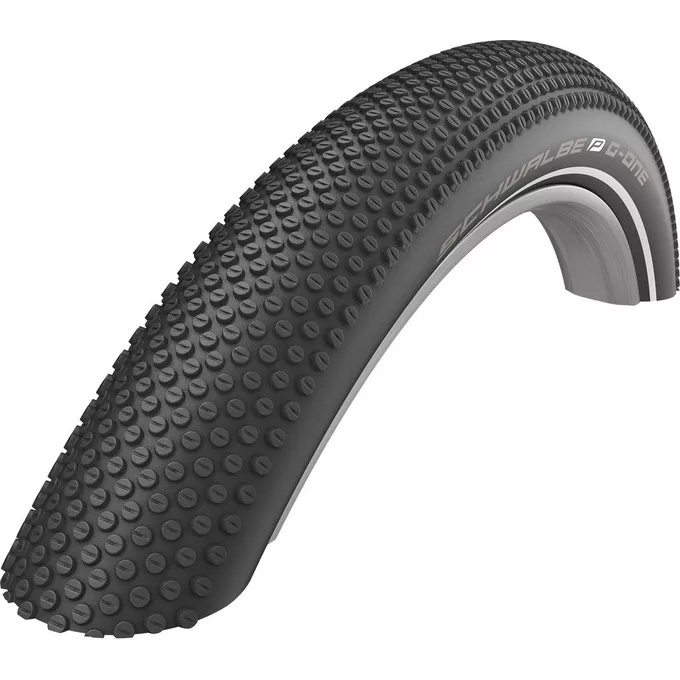
The G-One Allround from Schwalbe is a banger of a tyre for dry rides. I found it rapid enough on the road that it never felt like it was holding me back, and on gravel they fly along. As the tread is the same from centre to shoulder they're extremely predictable, and while they do cut loose if you ride them hard there are never any surprises when it happens.

If you want one tyre that will cover you for more or less everything then I suggest you get these. The fast centre rolls quickly on tarmac and hardpack, the side knobs are great on off-camber sections, and at the right pressures, they perform well in the wet. Most widths and wheel sizes are covered, and the only real drawback is the lack of a supple, light-cased option.
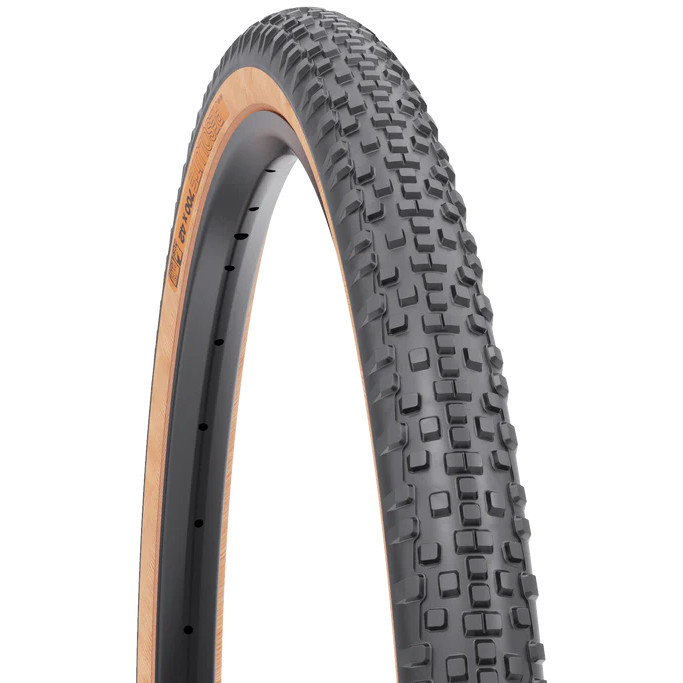
I find WTB tyres tend to have a flatter profile than other brands. This makes them a little more draggy, but in the wet the larger contact patch results in better grip. They're also pretty sturdy, which is great as riding in the wet tends to result in a greater risk of punctures; muddy puddles hide all manner of unseen hazards. They're also very reasonably priced compared to so many on the market.
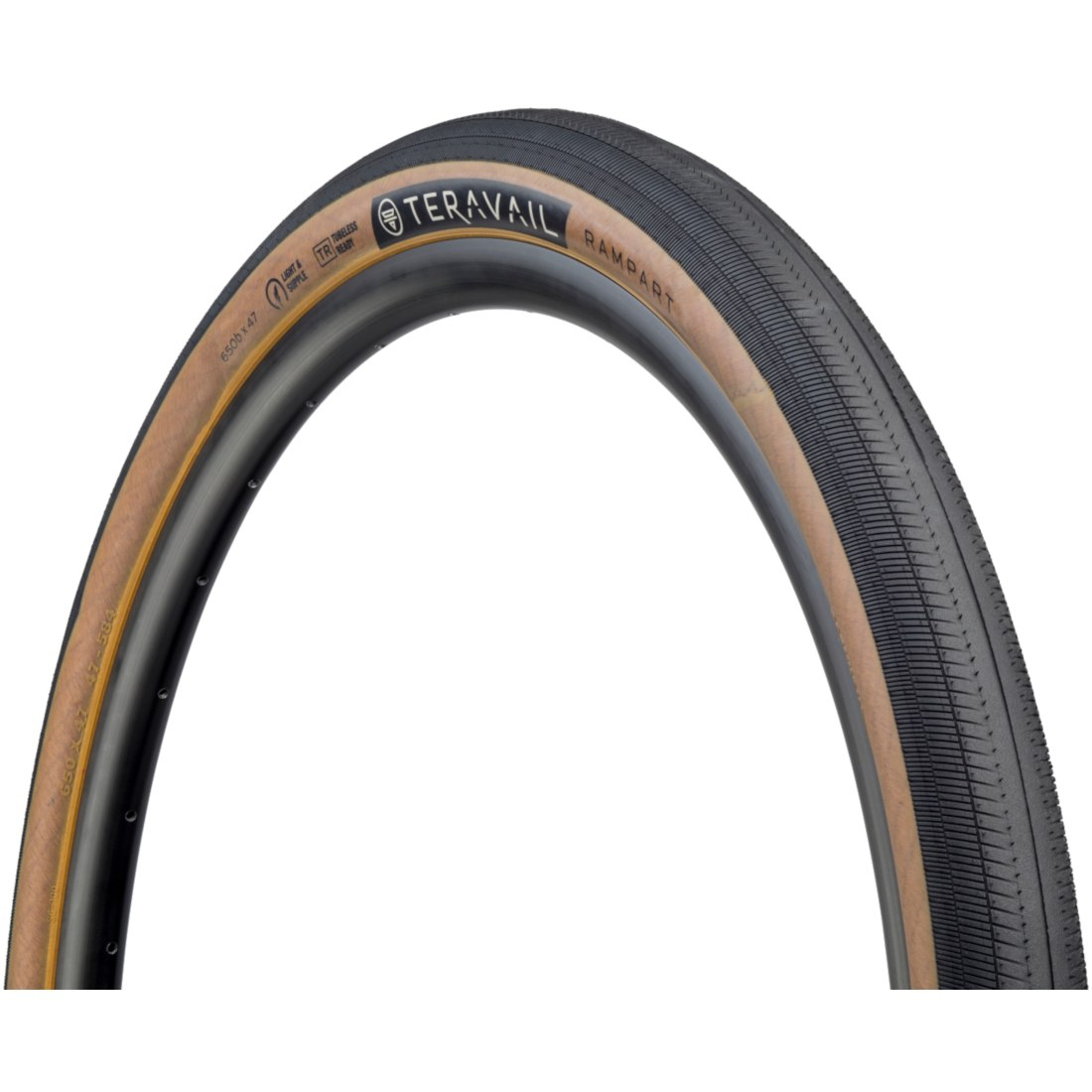
Bombing around backroads on a set of Teravail Ramparts is a joy. The tyres have a lovely round profile which I found results in a feeling of trustworthiness even when leaning into a cobbled apex. The tread itself is thick so they last a long time, which helps offset the RRP somewhat. The light casing isn't super supple if that's your thing, and sadly for fashionistas the tanwalls only come in one size for 700c and 650b.
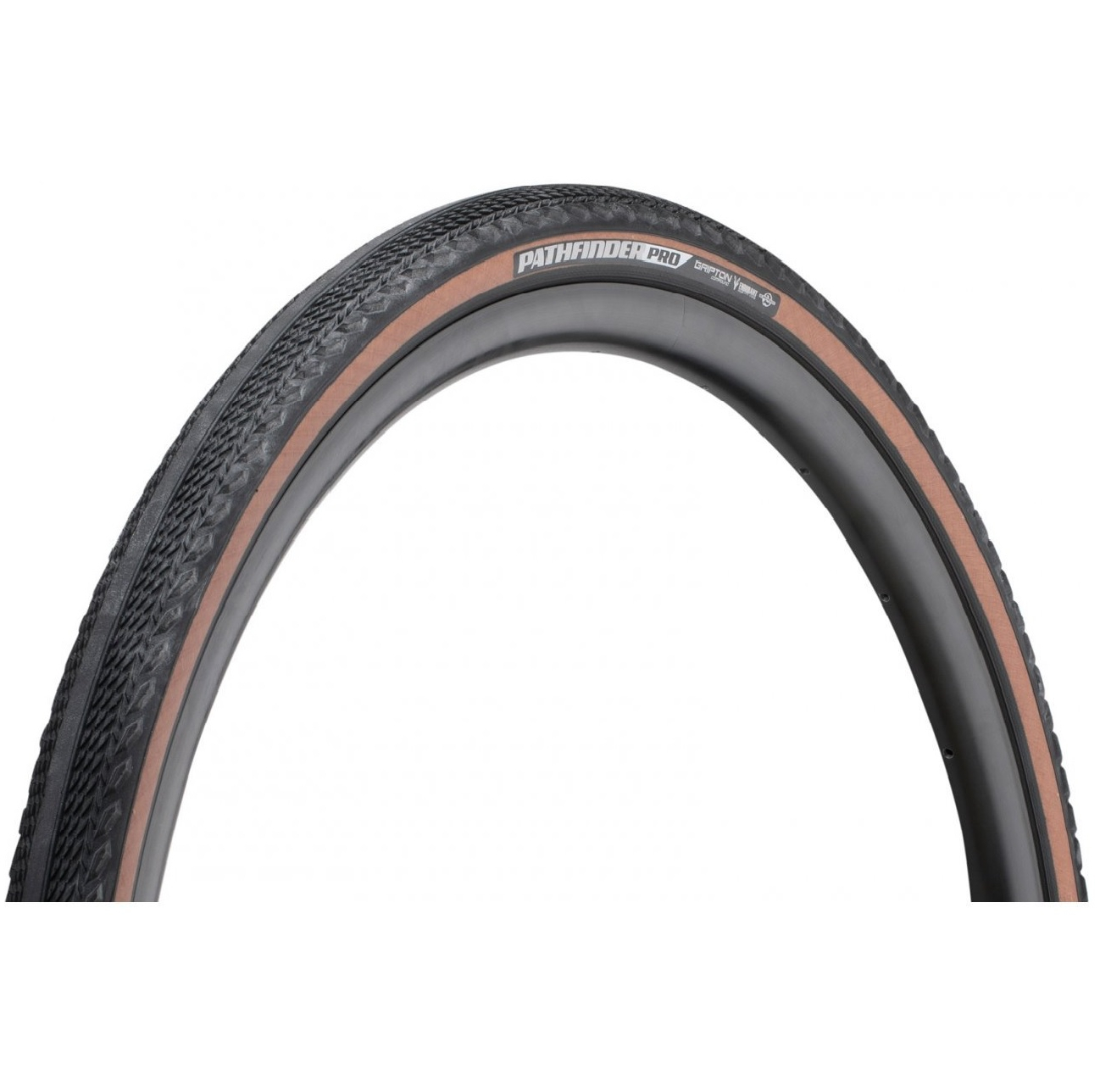
The Specialized Pathfinder Pro is the more budget-friendly version of the S-Works Pathfinder. It's less supple, with slightly taller knobs so it'll be a bit slower, but it's still a tread pattern that's been proven at the biggest gravel races like Unbound. The slick centre means it's no slouch on the tarmac too for linking gravel sections together, but I'd avoid using it in proper mud if you can help it.
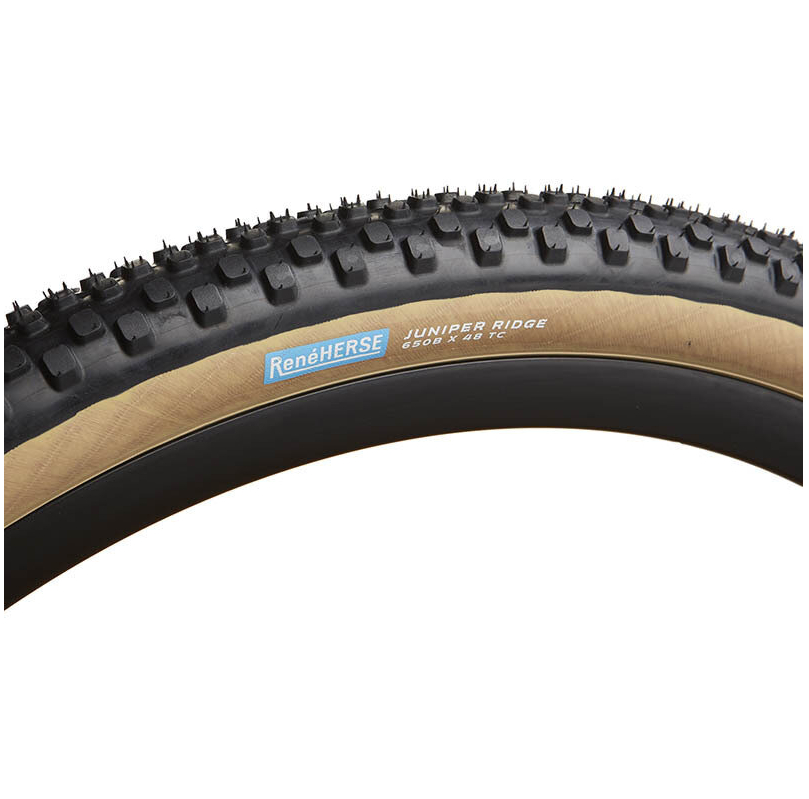
If you crave truly supple gravel tyres then the Rene Herse dual-purpose knobblies (each size of which is named after a different mountain pass) with the Extralite casing is a great pick. I found the knobbly tread surprisingly fast on hardpack, and while it isn't great in thick mud it's decent enough on most surfaces to be a good fit-and-forget option. The lightness of the casing does mean they don't hold air well though, so be prepared to top up regularly.
Last updated on 04th of June 2025
Overhauled the guide format to make it more concise and readable and streamlined the buying advice to make it more digestible for the reader. All the products were checked to ensure they are all still current and available plus added links to new reviews and supporting content and testing.
Best gravel bike tyres available today
Best gravel tyres for dry conditions

1. Schwalbe G-One Allround
Specifications
Reasons to buy
Reasons to avoid
✅ You want predictable cornering: The uniform tread and round profile mean as you lean into a corner there is no step-change when you get the shoulders involved.
✅ Your gravel riding takes in a lot of tarmac: These roll very well on tarmac, and handle a lot like an all-road tyre when you're threading sections of gravel together.
❌ You want a super-supple ride: If you crave that super-supple ride, Schwalbe doesn't offer a truly racy casing option.
❌ You want lots of cornering grip: The lack of an aggressive shoulder means that if you really throw it into a corner on loose gravel they don't bite that well.
If you want a fast, dry-condition gravel tyre then I suggest you go for the Schwalbe G-One Allround. The tread is a regularly spaced array of small, circular knobs that get ever so slightly taller and more widely spaced on the shoulders. This, along with a well-rounded shape makes for a little loose, extremely quick, but ultimately very predictable summer tyre that excels on those rides that link up tarmac, broken roads, and dusty, dry trails.
The tread, compared to more or less any other tyre in this guide, is extremely simple. The only variation is extremely small in both the knob spacing and knob height, which means the tyre feels the same regardless of how hard you lean it over. If you take the tread of something like the Goodyear Connector, there is a more stepped change as you lean into a corner and get the shoulder knobs involved, but with the G-One there's no distinct switch.
Given the knobs are small and so closely spaced I found them to be brilliant on tarmac, and the rounded profile here makes them feel like you're riding a motorbike, but the flip side to this is that they do get a little lively on looser surfaces. On hardpack they behave well, as well as on finer, deeper gravel in the dry, but if you have any slippery mud or gravel over rock then they can be rather lively, and unlike the Challenge Gravel Grinder there are no get-out-of-jail-free side knobs.
What I also like is that they come in a great variety of widths, cater for 650b wheels still, and aren't hugely expensive. They don't come in any crazy light and supple casing options, but despite this, I never found them overly draggy.
I've tried these in 'normal' gravel widths (40mm) as well as in a whopping 2.25" width, and while the normal width had no issues with seating, the larger size had the tendency to unseat when the tyre deflated, so bring a CO2 inflator if you run the chunkier end of the spectrum.
If you want to create a formidably fast combo with a little more security in the corners try combining one of these at the rear with a Challenge Gravel Grinder up front, where the aggressive shoulder knobs will help you avoid a front wheel wash out if you really want to corner hard.
Best gravel tyres for mixed conditions
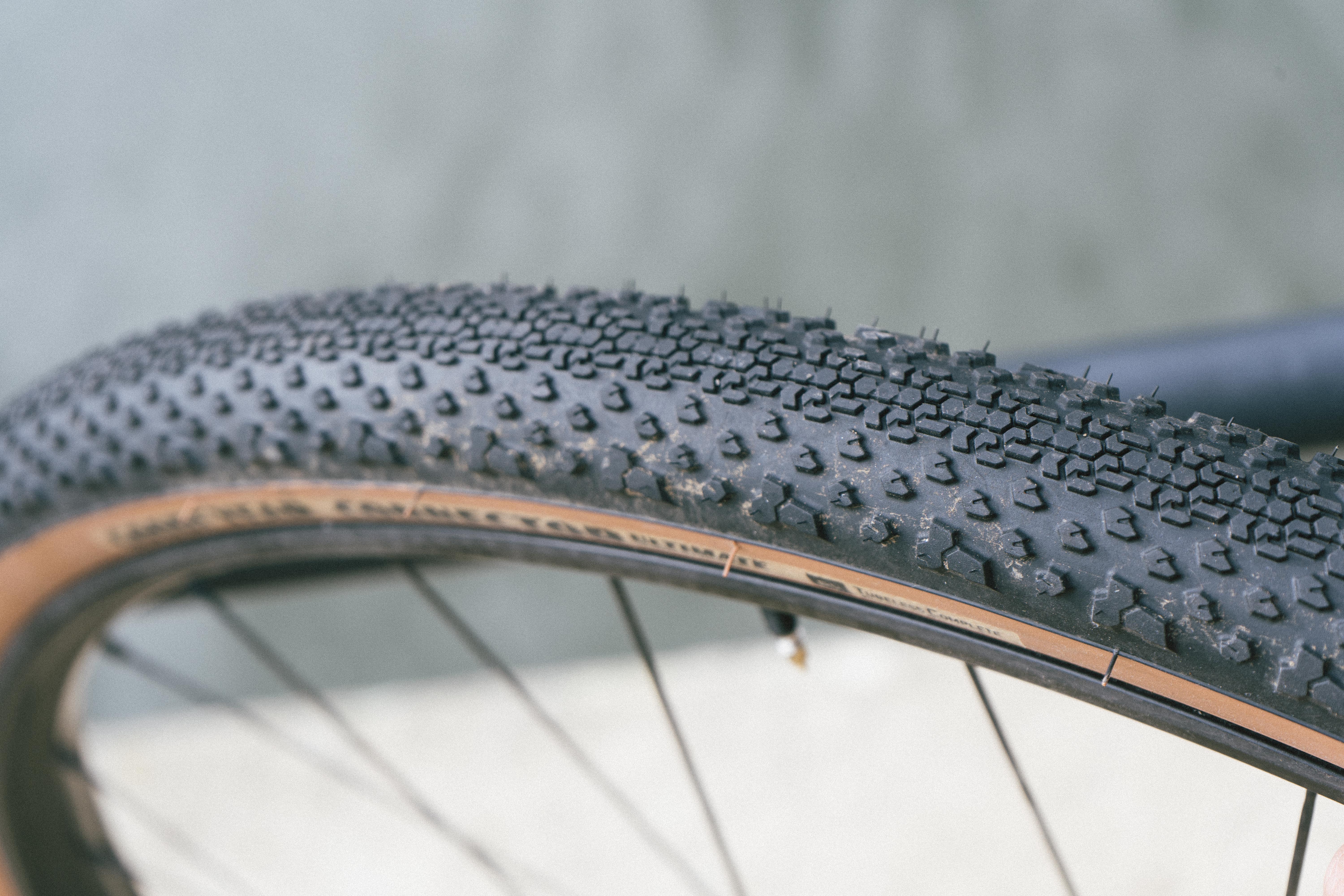
2. Goodyear Connector
Specifications
Reasons to buy
Reasons to avoid
✅ You want one tyre to do everything: These are fast, grippy in the wet, and can corner hard. They're durable too, so a true fit-and-forget product.
✅ You're using 650b wheels: While the 650b wheel size is slowly being phased out, the Connector still comes in a 650b diameter.
❌ You want a race casing: While there are plenty of width options, there is only a single, 120TPI casing option. For those of you after a light and fast option look to the Challenge Getaway instead.
❌ You want a super sturdy tyre: A single casing option means there's no sturdy, endurance casing option either. While they are hardy, if you want something bulletproof look at other options.
There are a few products that always lift my spirits when they come fitted to a review bike. A Selle Italia SLR Superflow saddle is one of them, as is a set of Goodyear Connector gravel tyres. They truly are a Goldilocks product in my view; fast on hardpack, and they punch well above their weight in the wet too. What's more, they come in a good variety of widths and still support the dwindling 650b wheel size.
In a straight line, the centre knobs offer relatively little in the way of resistance. Forward traction is ample, and while they aren't the roundest tyres they only really flatten off in the region of the centre tread.
This straight-line speed is complemented by a surprising grip in even muddy conditions. The knobs are small in surface area, but immediately away from the centre, they become both tall and widely spaced. When run at lower pressures this brings them into play and I found even in mud it was surprisingly hard to break traction under power.
In cornering the uniform nature of the inner shoulder knobs means things are grippy and predictable, with the far edges catching all but the worst slides in a similar fashion to the Gravel Grinder shoulders.
Everything from a near-cyclocross 35mm up to a voluminous 50mm is covered, if only in a single 120TPI casing option. If you are of a mind to run an extremely supple casing then the Challenge Getaway is a markedly similar tread, but in my experience, while they are faster, under extremely hard cornering (the sort you can achieve on a tread like this) you actually want a slightly stiffer sidewall in order to stand up to the forces and stop things getting squirrely.
If you're minded to run a mixed setup then it would make a great front tyre in combination with a Gravel Grinder at the back, or run it as a rear tyre in the winter along with something like the Vittoria Mezcal for a rapid wet weather setup.
Best gravel tyres for wet conditions
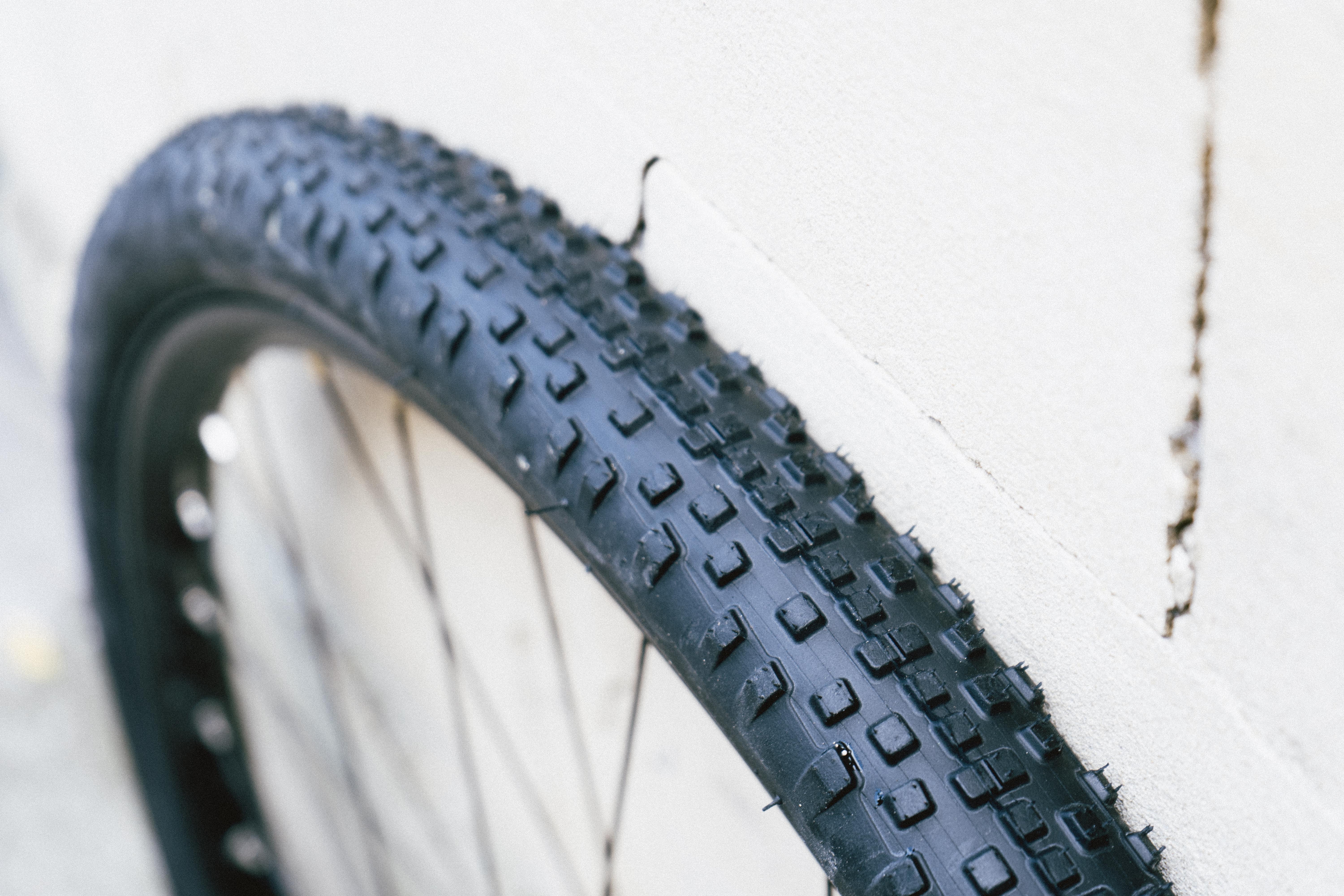
3. WTB Resolute
Specifications
Reasons to buy
Reasons to avoid
✅ You want tractor-like grip: The square knobs and flat profile mean you get brilliant forward locomotion and great performance under braking too even in the muck.
✅ Speed isn't the goal: If your wet weather riding is more about getting through it rather than setting PRs then these tyres are your friend. A little slower, but more grippy.
❌ You like to go fast and loose: These aren't the fastest option, and if you don't mind losing grip occasionally you can find more speedy options elsewhere, like the Teravail Rutland.
❌ You want predictable tyre rollover: The flatter profile of WTB tyres, combined with the square edge provided by the shoulder knobs, mean this isn't a tyre that rolls over as easily as rounder options.
Wet means slippy, and when you're fighting to either gain traction in the rear to maintain forward momentum or keep the front wheel on the straight and narrow then the WTB Resolute is a safe pair of hands.
In my experience, WTB tyres have a flatter profile than most other brands. Usually, this makes them a little more draggy, as a rounder profile will have a smaller contact patch, but when you want grip this larger contact patch is beneficial.
This flatter profile is squared off even more by the use of tall, buttressed side knobs, meaning there's a tractor-like quality to these tyres in the wet. They aren't going to compete with the hyper-aggressive tread of a cyclocross mud tyre like the Challenge Limus, but outside of a muddy field, those tyres make little sense.
As well as grip, both for locomotion and for cornering, wet weather tyres need to be more durable. Muddy puddles can hide sharp rocks, roots get more exposed, and often you can't see so well, meaning you're more likely to hit something hard. On the road, too, debris gets washed onto the blacktop more frequently, so having a tyre that's as durable as the Resolute is a benefit, even if there is a corresponding drop in speed to balance things out.
One final thing to consider for a winter tyre is braking traction. When things are wet, or just loose, you want a tyre that bites in effectively the reverse direction when you slam the anchors on. Here's where the square knobs come into play again. Yes, it would be faster to chamfer the leading edges, but then you'd lose out on braking ability - another area where I'd happily take the speed hit for a bit more control.
Best all-road tyres
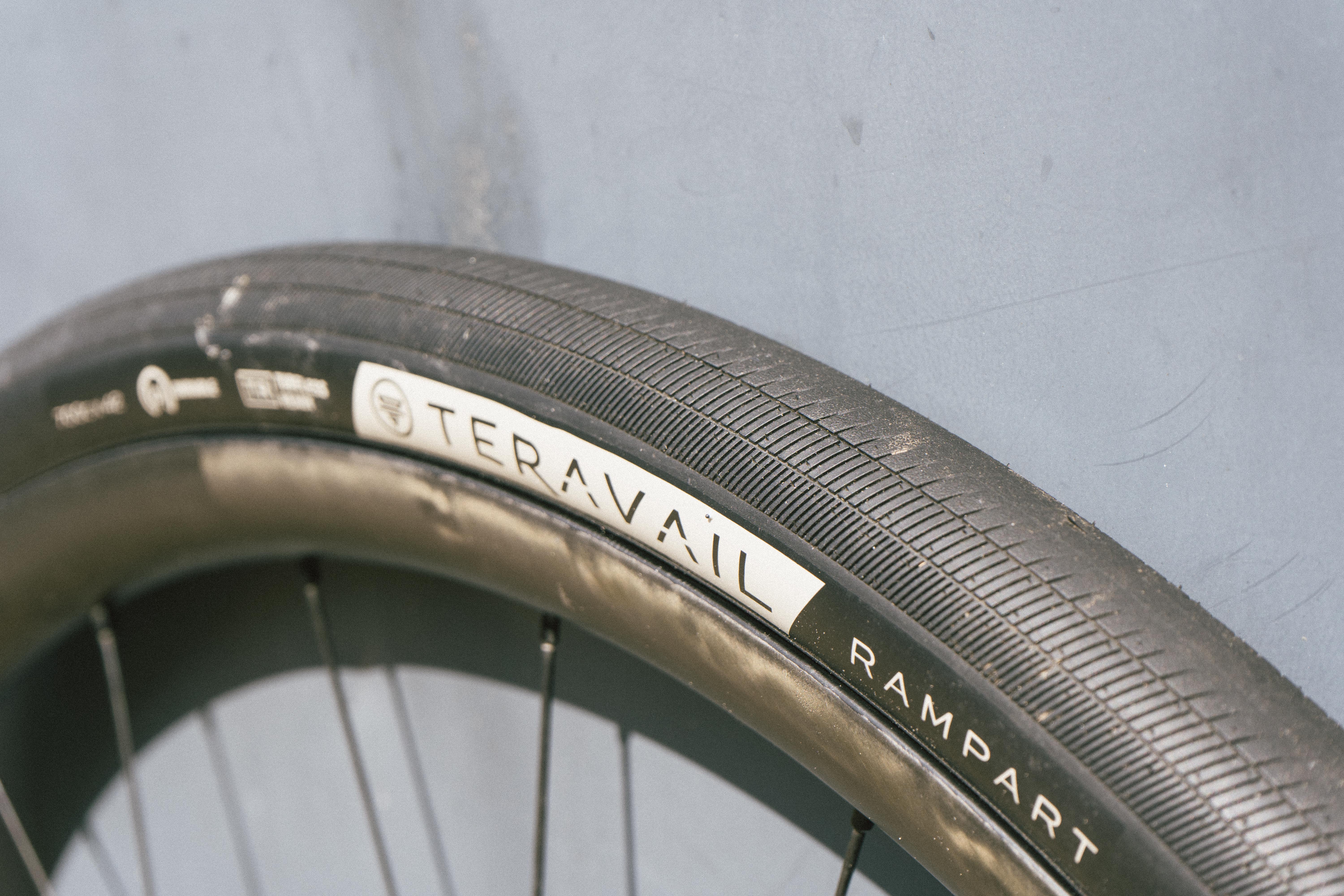
Specifications
Reasons to buy
Reasons to avoid
✅ You want a long lasting tyre: The extra millimetre of tread thickness in the centre ensures you'll keep rolling for more miles.
✅ You're after predictable cornering: Like the G-One Allround these have a great round profile and well-graduated shoulder sipes, meaning there's no stepped feeling as you lean into a corner.
❌ You want a pillowy ride: The lack of a super-supple casing option like Challenge and René Herse offer means you can't get that cloud-like feel.
❌ You're hitting gravel regularly: While they'll cope on dry gravel they don't excel, so if you're regularly deviating then try the Schwalbe G-One Speed.
Tyres come and go in this job, but a pair I've always held onto 'just in case' are the Teravail Ramparts. If your riding is predominantly road, be that beautifully smooth asphalt through to grass-up-the-middle backroads. then these are the tyres for you. They can handle light, dry gravel too with relative ease, though it certainly isn't their forte, and the lack of any knobs at all, especially on the front, can make them a little squirrelly.
Like every tyre I've tested from the Teravail range, the Ramparts plump up to a beautiful round profile. This results in a smaller contact patch, and a faster ride, and perhaps more importantly really predictable cornering characteristics. The shoulder sipes are well graduated, though the texture extends so far onto the shoulders that you'll have to be really pushing it in the corners to make use of them.
In terms of ride quality, they lose out to the Challenge Strade Bianca, but with their beautiful cotton casings the pillowy ride feel and very low rolling resistance comes at the expense of durability. The Ramparts aren't a super-supple tyre, not least because the tread in the centre is 1mm thicker than others in the Teravail range for added longevity, but they are trustworthy for the long haul.
When choosing an all-road tyre it is tempting to go for the most supple tyre possible, and while I run 320TPI Strade Biancas on my classic tourer, running a slightly stiffer sidewall like these stop the tyres squirming underneath you in hard cornering, especially if you're running them on older, narrow internal width rims.
In short, a brilliant fit-and-forget option for all-road riding. If you want something more specialist then look below, but these should be your first port of call.
Also consider
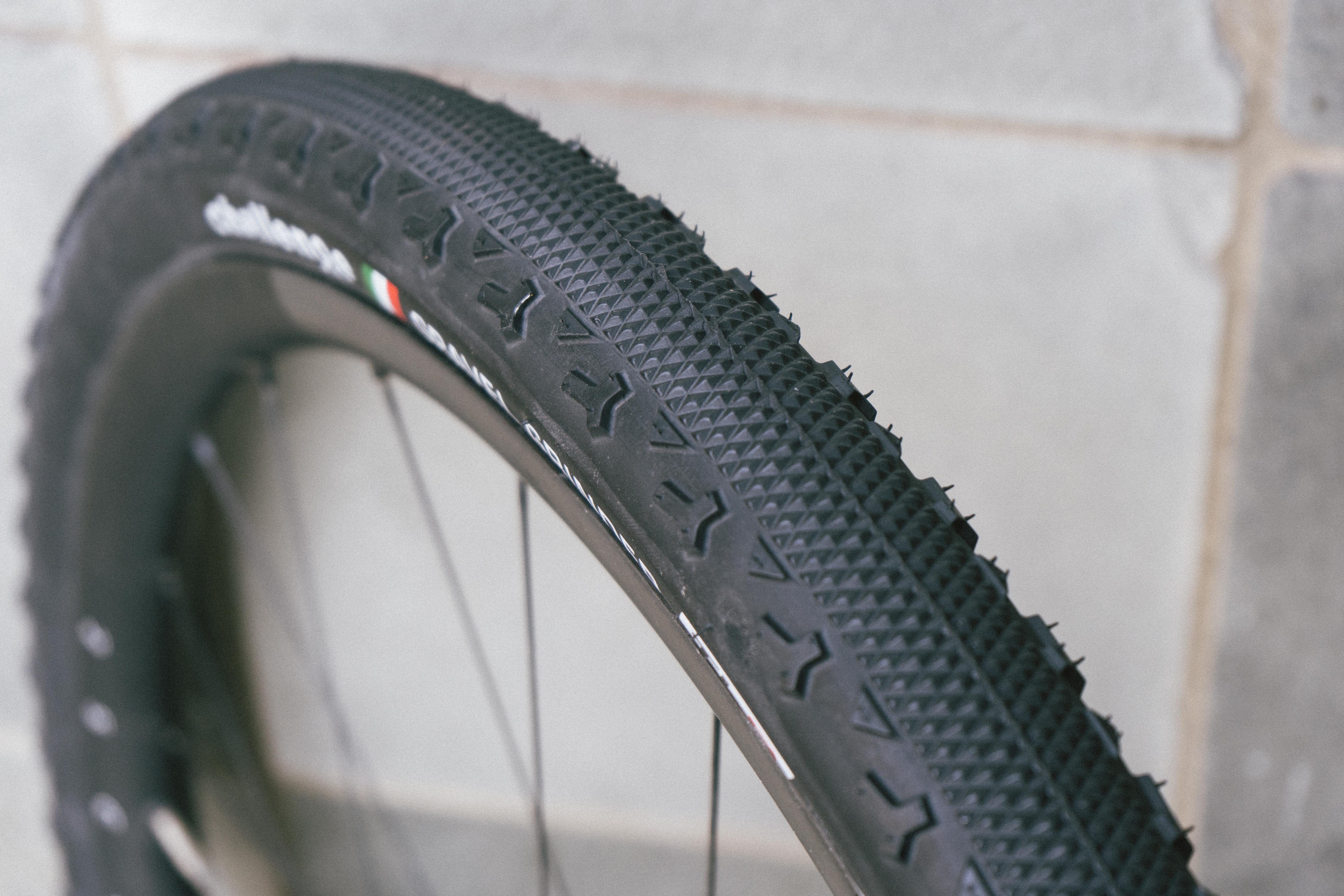
Specifications
Reasons to buy
Reasons to avoid
One of my favourite gravel tyres, and one of the oldest too. They're a tonne of fun thanks to a wicked fast file tread centre and extreme shoulder knobs taken from the Limus cyclocross mud tyre. They'll let go pretty easily in loose or wet conditions, but most of the time they'll catch you. They're not available in many widths, and it's 700c only, but to my mind, they make a near-perfect front race tyre as you can hammer it in a straight line and still corner hard with confidence.
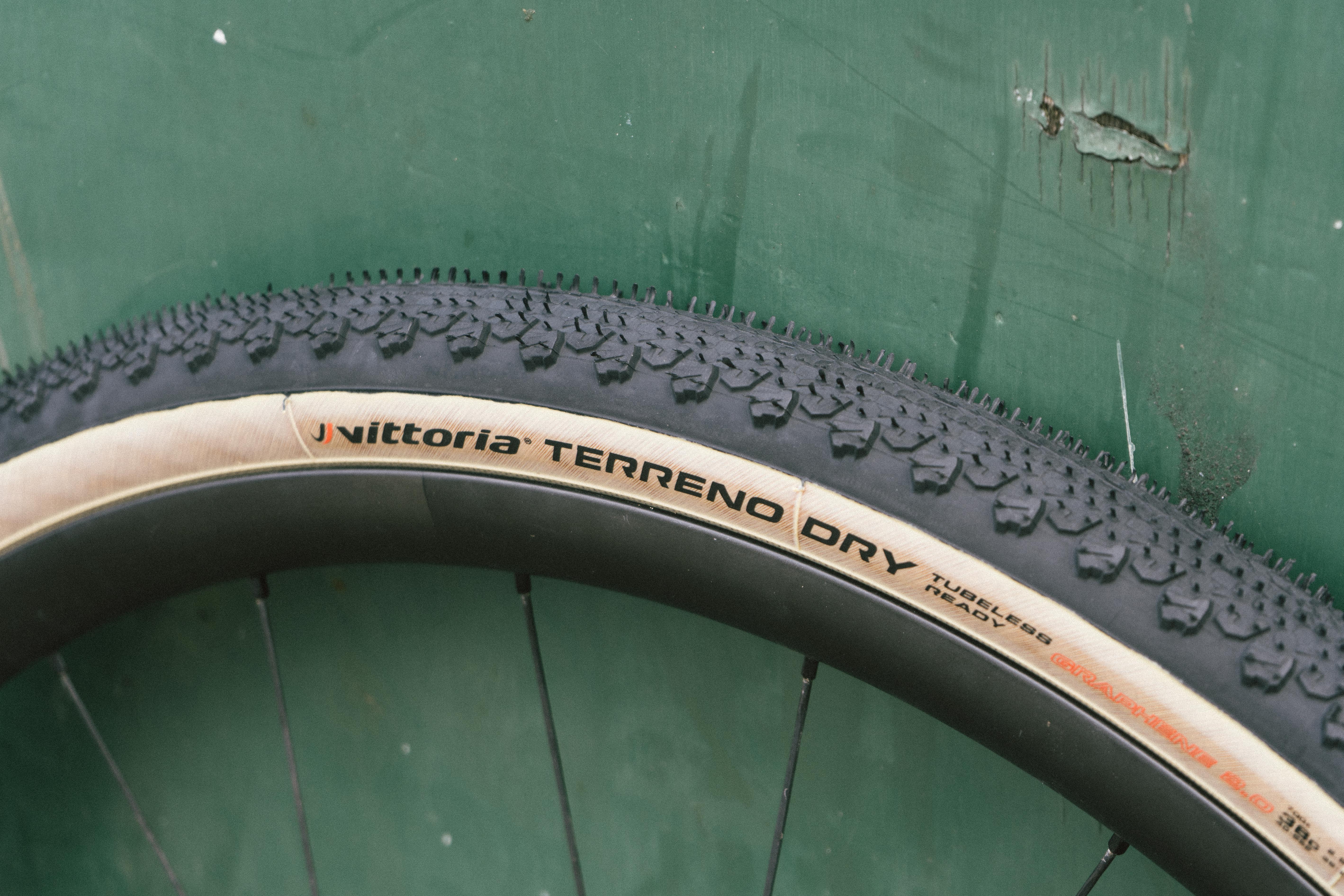
Specifications
Reasons to buy
Reasons to avoid
Much like the Challenge Gravel Grinder the Vittoria Terreno Dry combines a very low profile centre tread (almost slick, in this case) with more aggressive knobs at the very edge of the shoulders. It fills the same sort of niche as the Gravel Grinder, but comes in a wider array of sizes and casing options - just be aware the 'adventure' casing isn't tubeless ready. If you like the look of this but think it looks a little too slick then try the new Terreno T50, which is nearly identical but has more widely spaced centre knobs for greater traction.
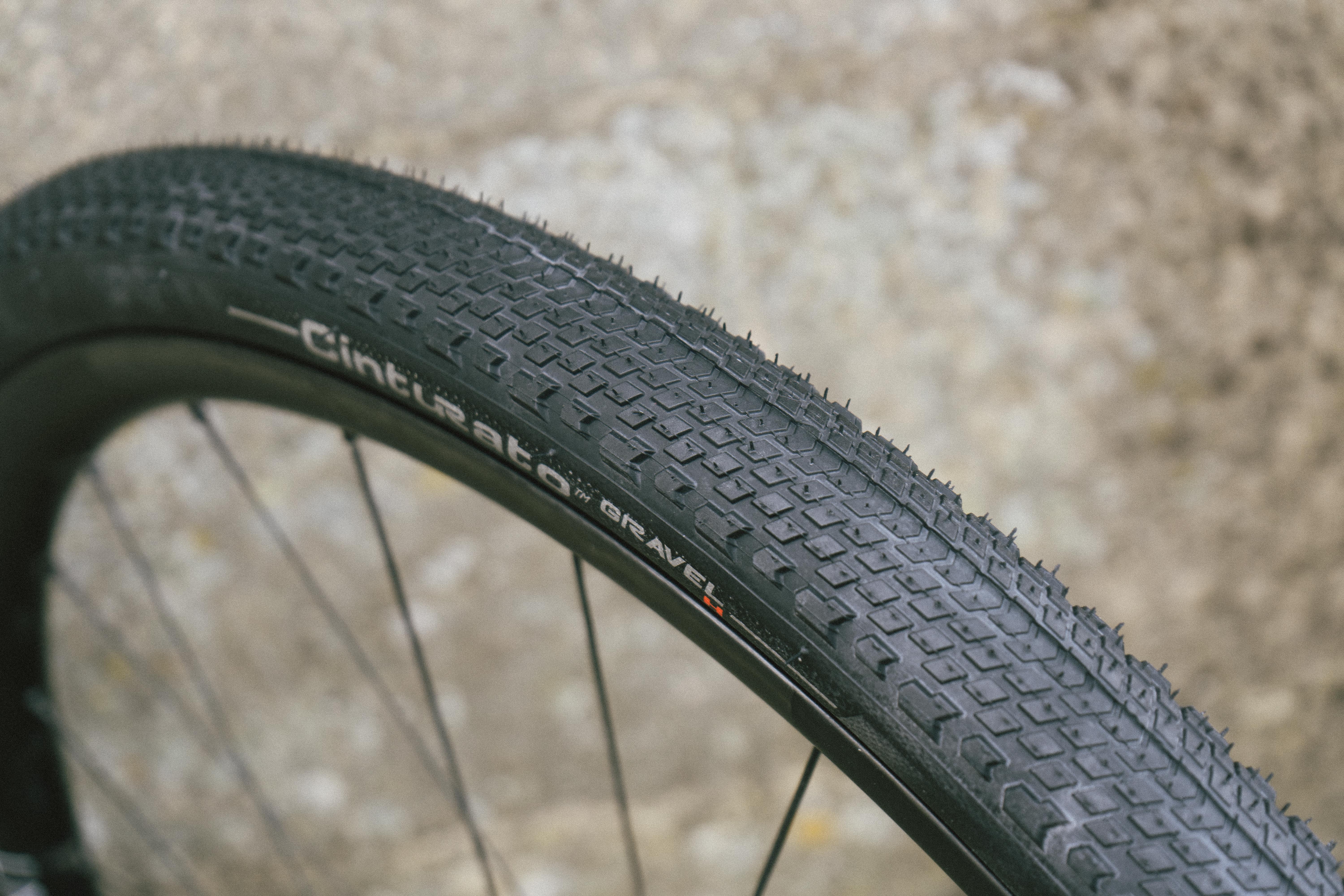
Specifications
Reasons to buy
Reasons to avoid
Sitting somewhere between the all-over tread of the G-One Allround and the bipolar nature of the Gravel Grinder, the Cinturato Gravel H (for hardpack) has a gradual change from the closely spaced centre knobs to the moderate shoulder ones. A centre ground of predictability and cornering grip that, while good for a summer tyre, is sadly only available in three widths and a single casing option. 120TPI is OK, but it's not going to set the hearts of supple lovers alight.
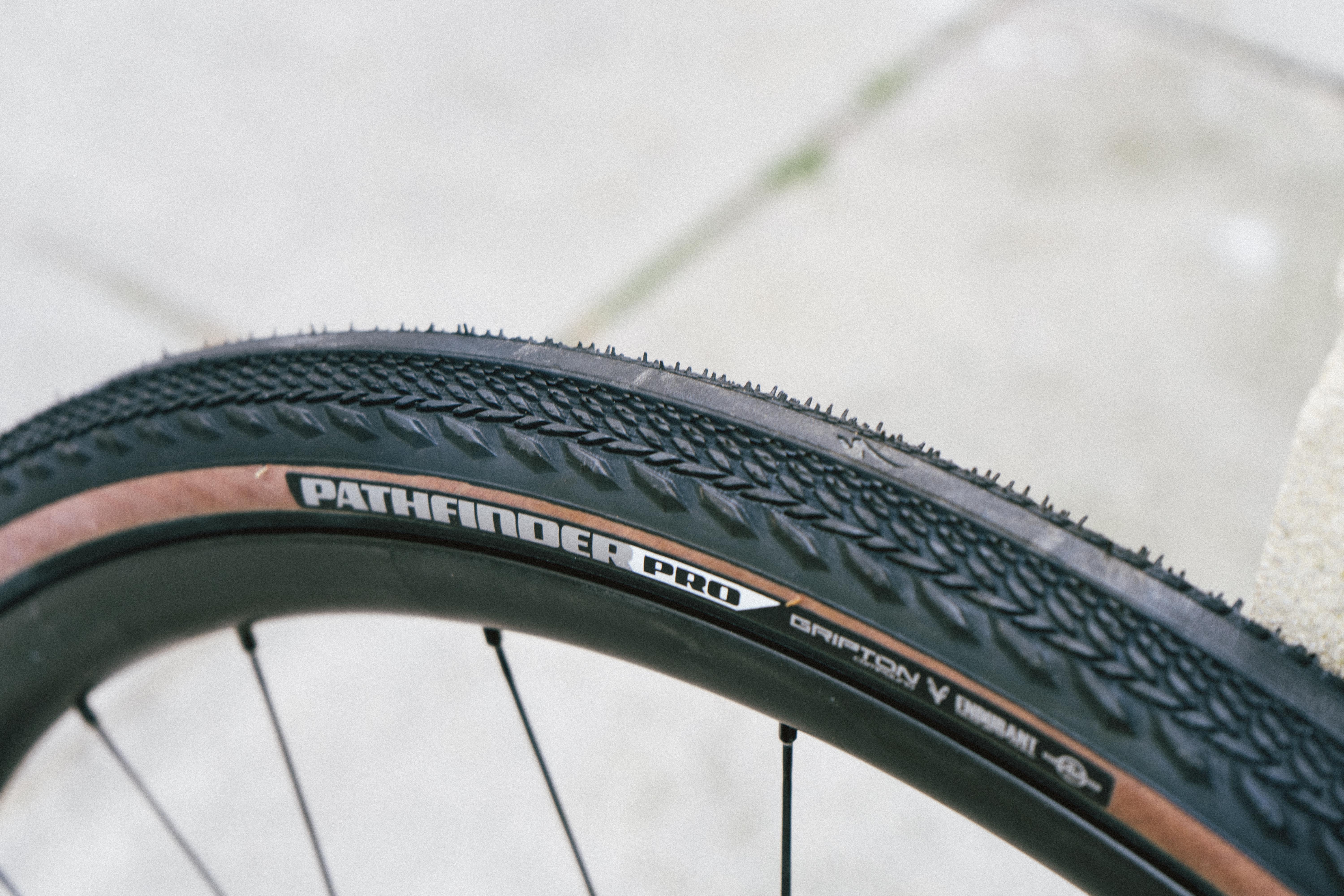
8. Specialized Pathfinder Pro
Specifications
Reasons to buy
Reasons to avoid
I rate the Pathfinder Pro as the best-value gravel tyre for a few reasons. The main one is that it uses a more or less identical tread to the S-Works Pathfinder, only with ever so slightly taller side knobs, for a price that's pretty friendly to the wallet. They aren't super cheap, but you get a race-proven tread that gets rolled out by big-name riders for races like Unbound in a package that won't make you bankrupt. The size range is pretty limited, but 650b is still supported for now.
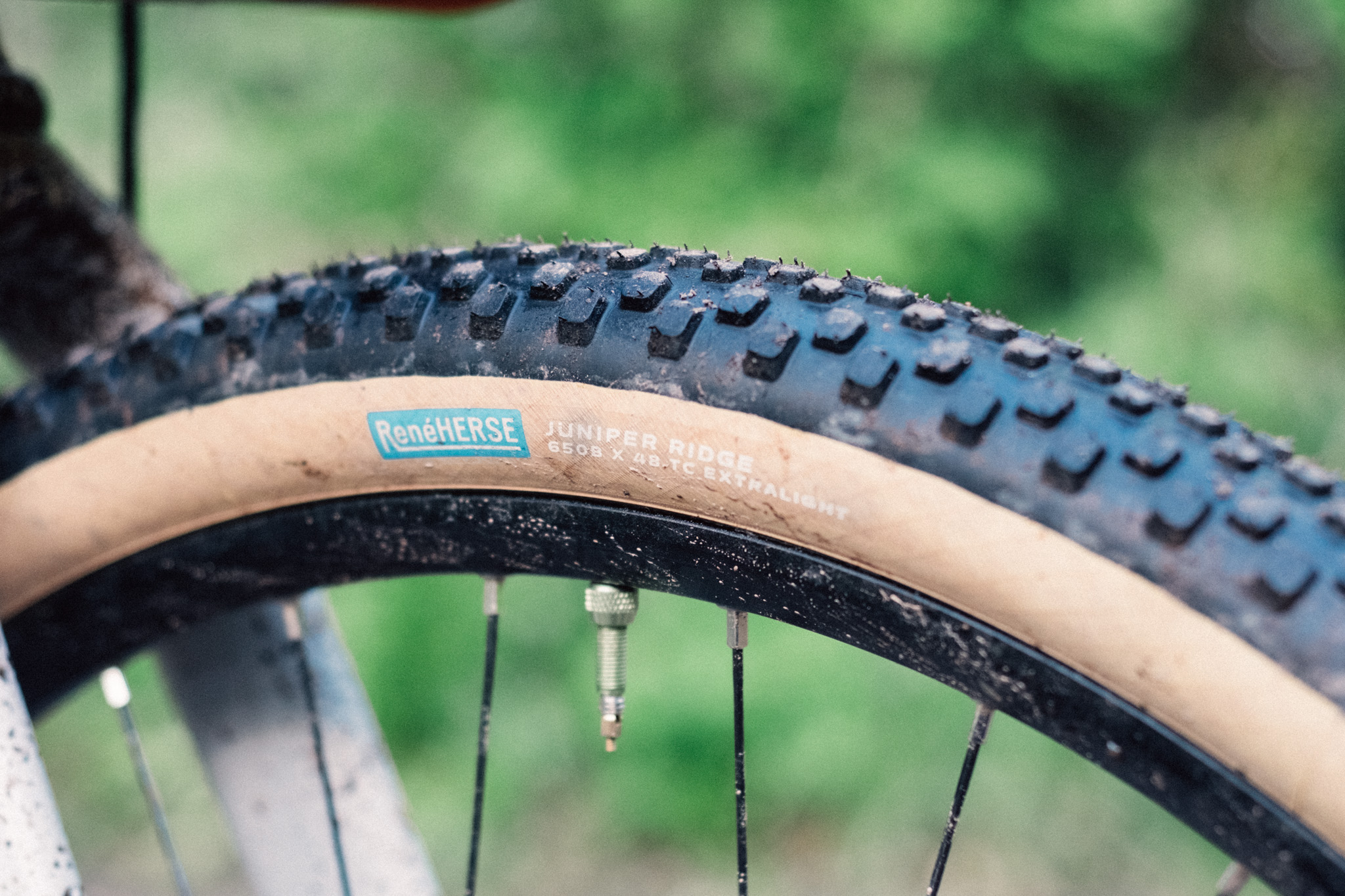
9. René Herse Juniper Ridge
Specifications
Reasons to buy
Reasons to avoid
These look pretty old fashioned but they can still mix it with modern tyres. Oddly each width is given a different name so pay attention. The knobs roll a lot faster than they look, especially when paired with the incredibly supple Extralite casing. Think of these as a do it all option, not a mud tyre, however capable the knobs look. While they are about as supple as tyres get I did find they struggle to hold air over the course of a few days.
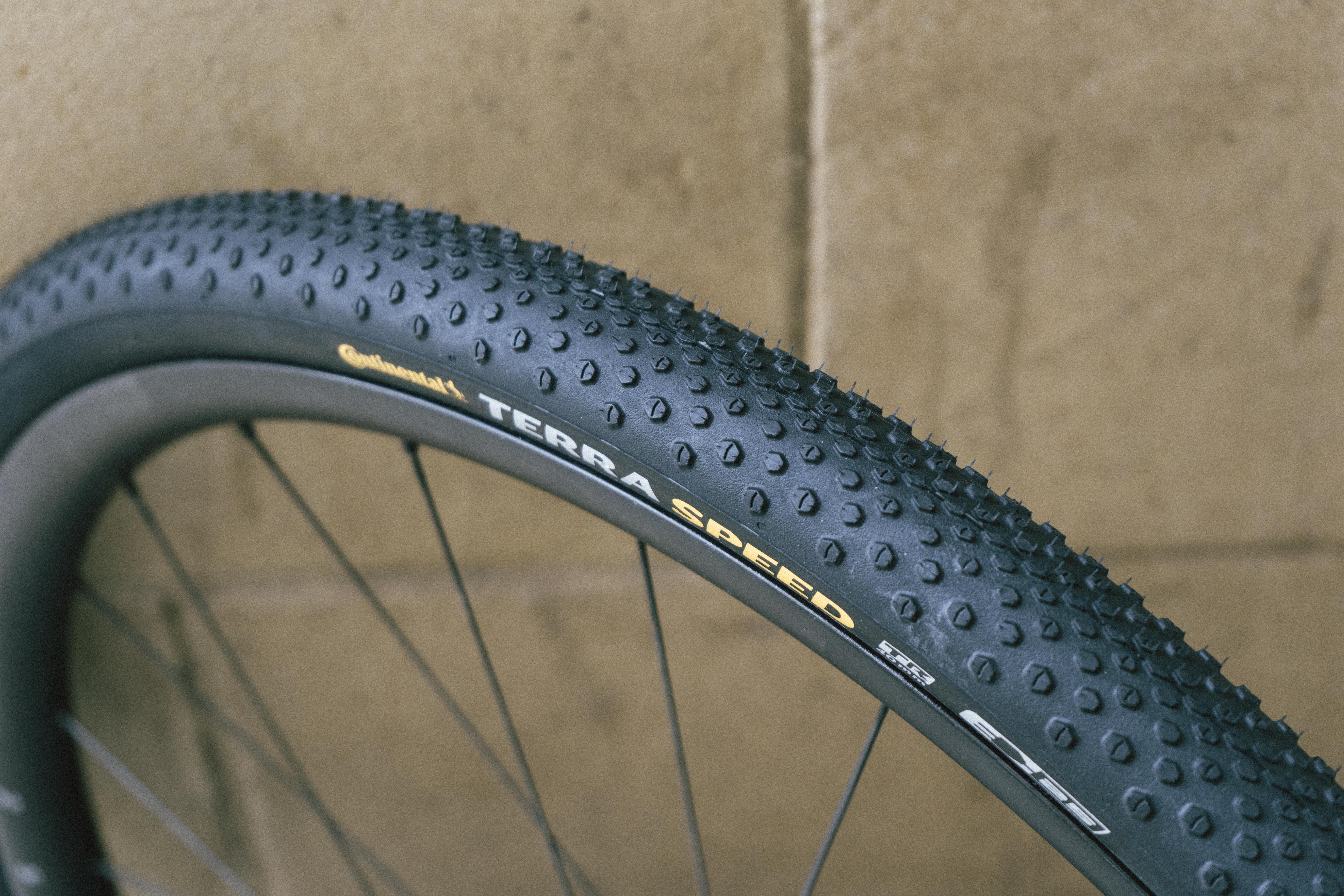
10. Continental Terra Speed
Specifications
Reasons to buy
Reasons to avoid
The Continental Terra Speed is something of a hybrid between the small, round knobs of the Schwalbe G-One Allround, and the knob spacing of the outer section of the Goodyear Connector. The wider spacing of the knobs will aid mud shedding, so if you want an intermediate tyre that performs a little better in the wet then it's a good option, or think of it as a really fast rear tyre for wet conditions, as long as you're ok with the back end stepping out a bit.
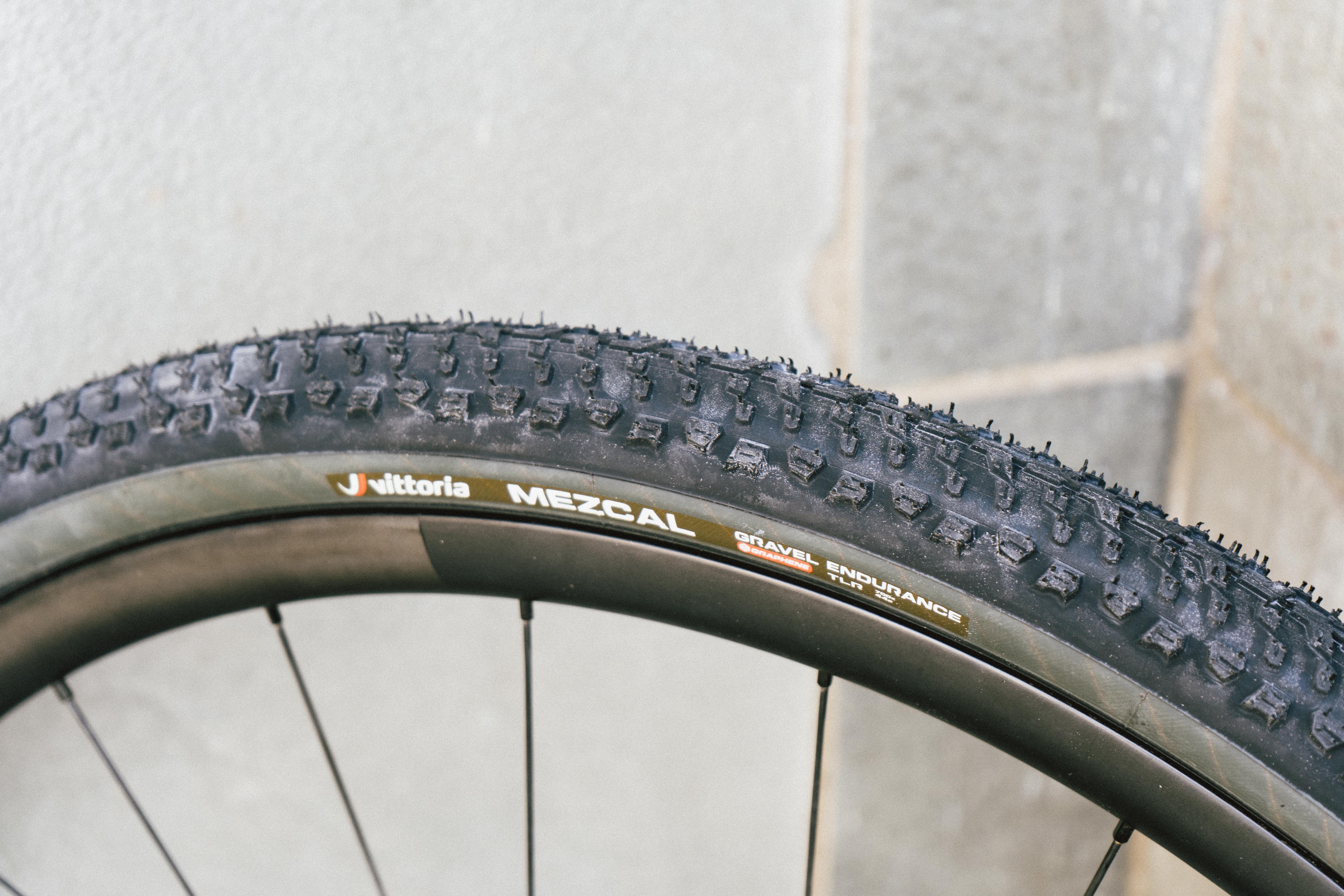
Specifications
Reasons to buy
Reasons to avoid
An XC MTB tyre that's been ported over to narrower widths for gravel uses, though if you're after a fast, grippy, go-anywhere gravel tyre and you have a gravel bike that can fit MTB tyres then the Mezcal is a great tyre for truly adventurous riding. the narrower widths aren't the most grippy in truly wet conditions, but fit it as a rear to speed up a setup and you'll be golden for all-terrain riding.
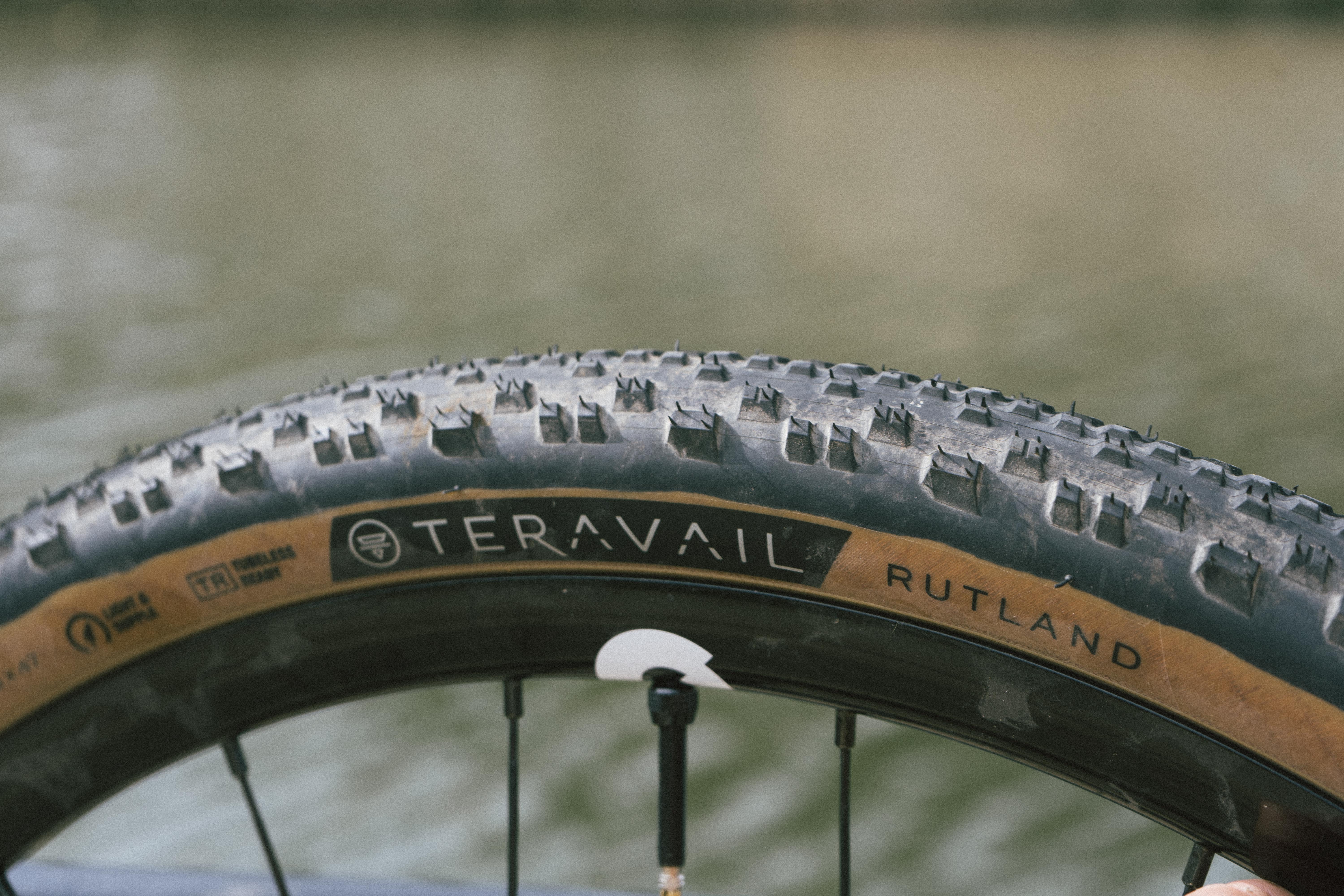
12. Teravail Rutland
Specifications
Reasons to buy
Reasons to avoid
The Teravail Rutland has a similar tread to the WTB Resolute but with slightly smaller, more parallelogram-shaped knobs and a rounder tyre profile. They're a little more expensive, but for that you get a faster roller and more width and casing options too. If you like a tyre with a more predictable rollover into corners then go for these over the WTB option.
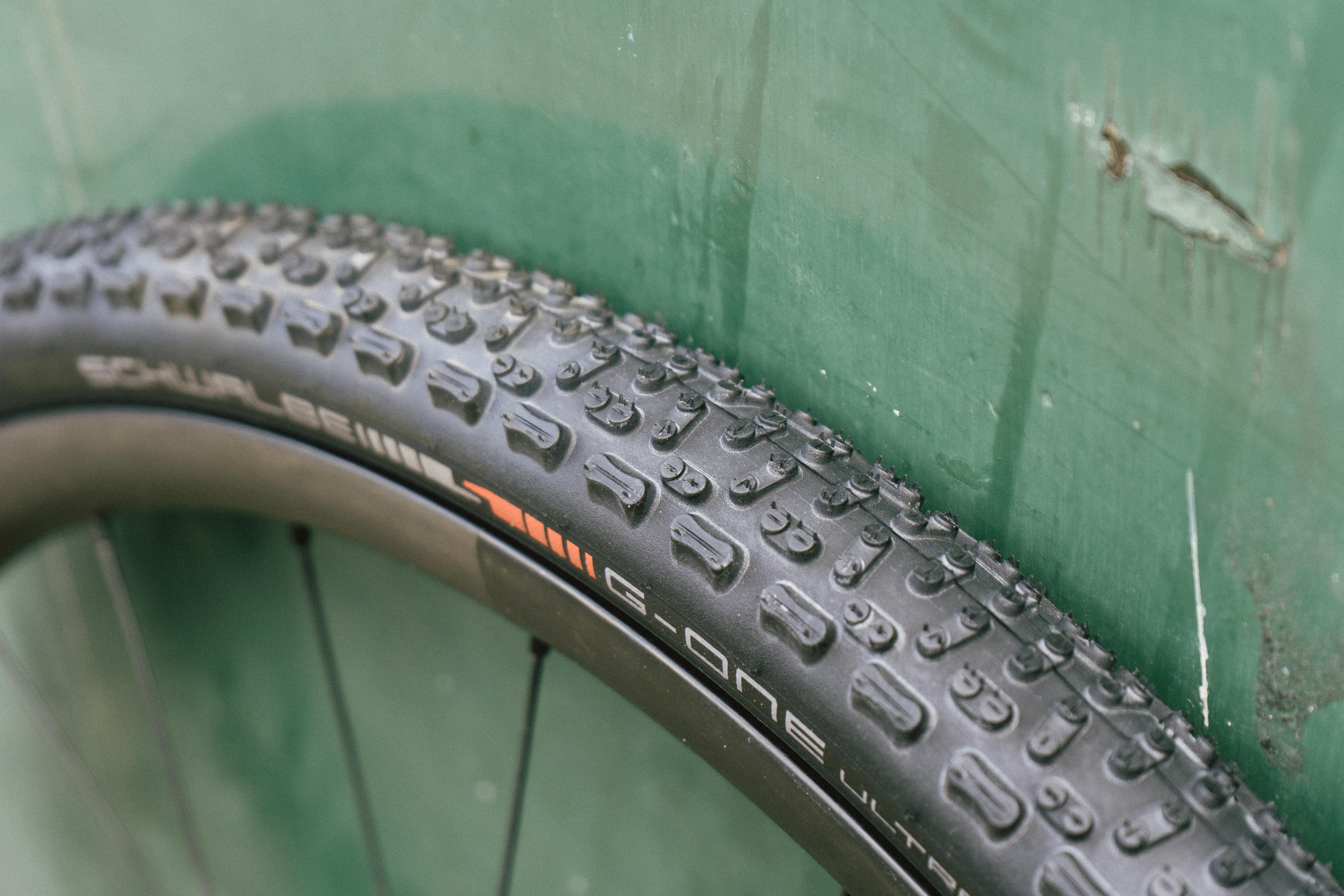
13. Schwalbe G-One Ultrabite
Specifications
Reasons to buy
Reasons to avoid
The tread on the G-One Ultrabite features the same small, round knobs as the G-One Allround, but fewer of them, more widely spaced, and connected by bars of rubber that run perpendicular to the direction of travel, in effect creating paddles for great drive and braking traction. While a wide range of widths are covered there are few options within the range though.
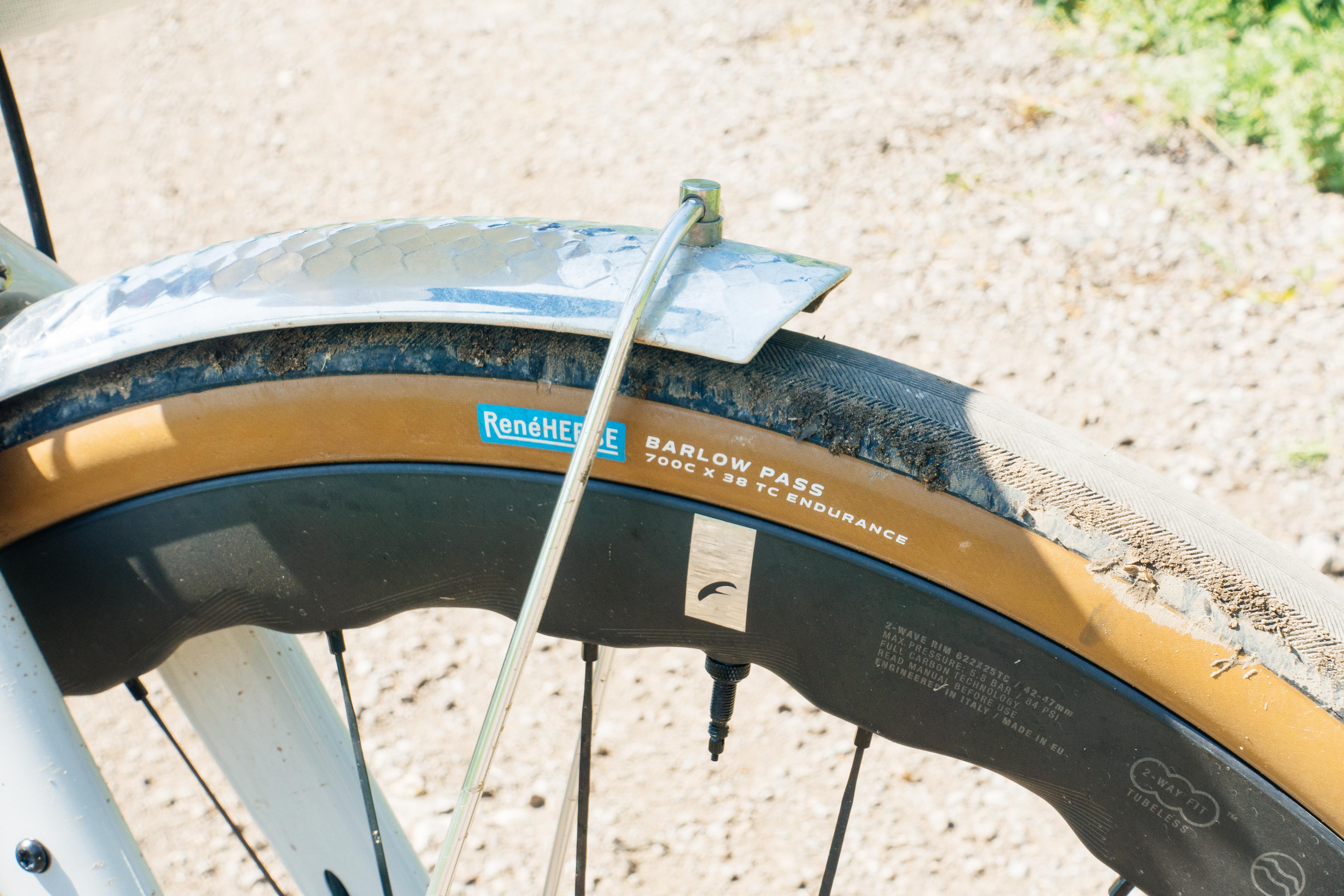
14. René Herse Barlow Pass
Specifications
Reasons to buy
Reasons to avoid
I found these to be a lovely, fast-rolling set of all-road tyres, though like the Challenge's the Extralite casing will struggle to hold air over a few days. The real benefit you get here though is options, with a huge range of widths, and even 26" wheels covered for if you're turning that vintage bike into a performance machine. As ever, each width and diameter uses a different name, so pay attention.
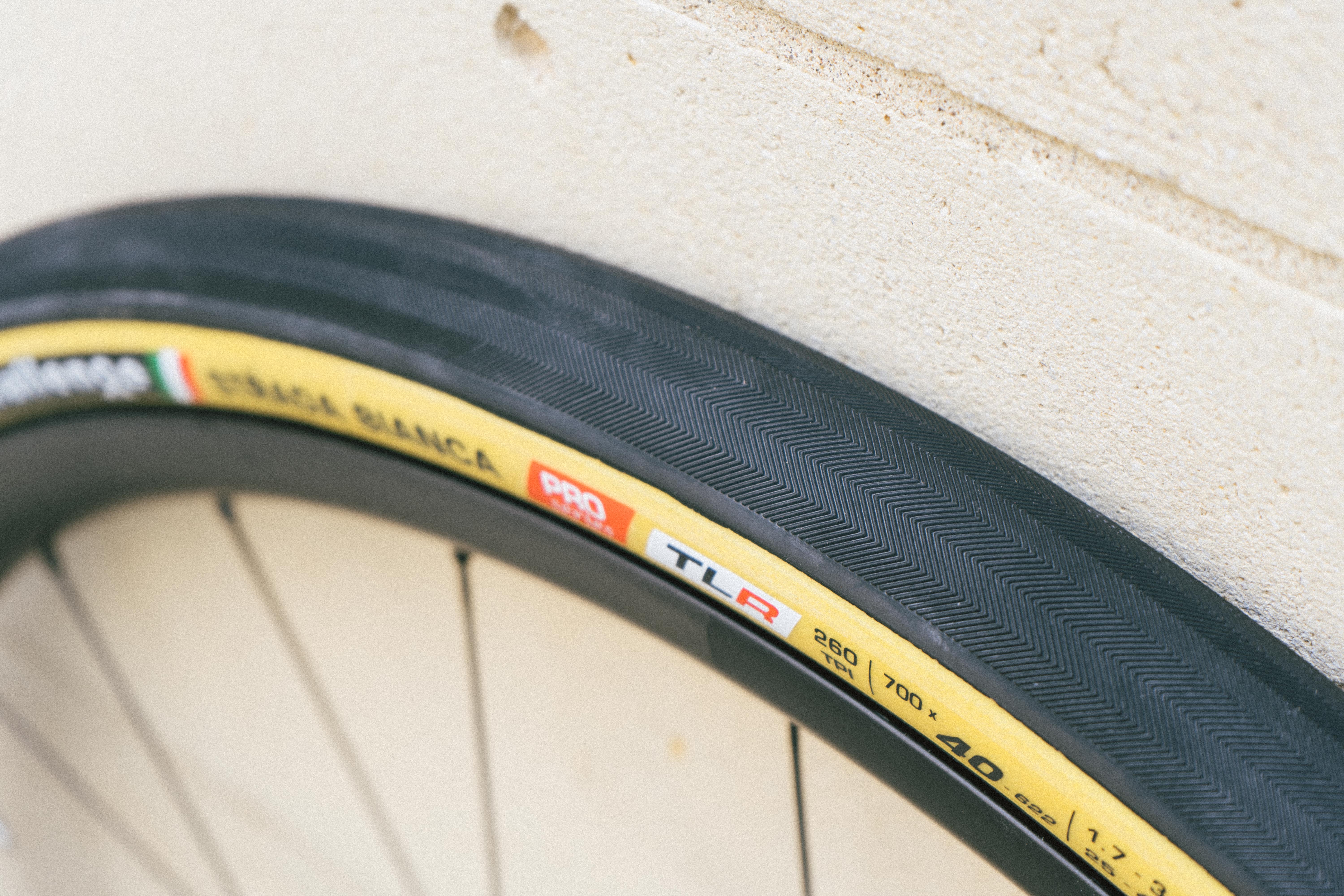
15. Challenge Strade Bianca
Specifications
Reasons to buy
Reasons to avoid
A nightmare to fit, don't hold air, but absolutely beautiful to ride to the point I'm willing to go through the faff over and over with them. In the cotton-cased version, the only one worth considering here, they offer up a pillowy ride like no other and are very fast, too. Not durable, and will stain if you're using rim brakes, but if you value ride feel over all else then buy these. The herringbone tread is also pretty solid on light gravel.
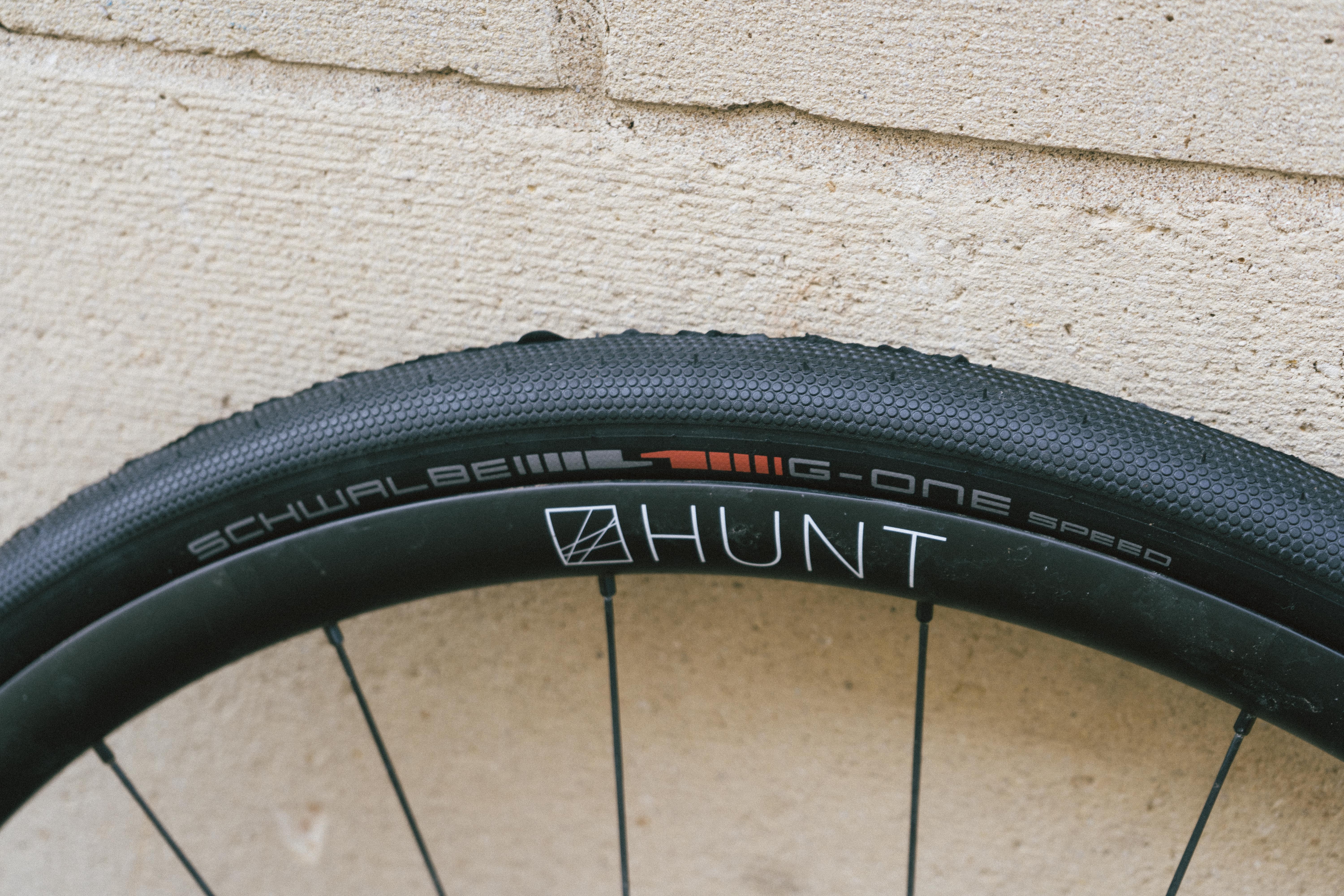
16. Schwalbe G-One Speed
Specifications
Reasons to buy
Reasons to avoid
If you find yourself venturing onto dry gravel slightly more often, or baulk at the thought of running a full slick, then look no further. The G-One Speed from Schwalbe has been raced at Paris Roubaix and is effectively the same as the G-One Allround but with lower profile knobs. As with the Allround, the shoulder knobs are ever so slightly taller and will fare better when cornering on loose surfaces than others in this section, as well as on off-camber sections.
How to choose the best gravel tyres for you
Choosing the right gravel tyre involved more factors than choosing a road tyre. Not only do you need to consider the tread, but there's a greater variety of widths too. Do you go for a supple casing or a tough one? Do you run tyre inserts? Do you want tubeless? How much gravel are you actually doing, and how much of your time will be spent on roads? All of these factors need to be balanced, and some of them will trade off against others, but with a bit of care it's easy to drill down into what is the perfect pair of gravel tyres for you - Spoiler alert; they may not be two of the same tyre!
What gravel conditions are you riding in?
Dry gravel is, with perhaps the exception of a few masochists, what we all daydream about. Dusty trails, scorched mountain fire roads, and crisp tan lines. Dry gravel tyres prioritise speed, given that traction is less of a concern; the width is usually enough to provide ample grip. In loose conditions, they may 'let go' a bit more easily than an intermediate tyre, but they'll almost certainly be faster all things being equal. They can also be thought of as an extension of the all-road category in many ways now, so if your gravel rides involve a lot of tarmac miles then these are the tyres for you.
This is the part of the guide that's going to cater for most people, most of the time. While the Goodyear Connector is my pick, the other three options that I've highlighted offer fit-and-forget, year-round capability. They won't be the fastest in the dry, nor the most grippy in the slop, but if you want one set of tyres then these are the ones to pick from. In general, they mix a closely packed array of centre knobs and more widely spaced, taller shoulder knobs to allow them to bite into softer substrates and corners with greater confidence.
While it is perhaps not what most of us enjoy, getting your tyres right for wet, sloppy gravel (mud-heavy, slippery, generally grim) is going to make more of a difference than it well when the conditions are already dry and fast. Get it right and you can sail through slippery conditions in a serene manner. Get it wrong and you may have to walk, or worse still you may end up rubber side up in a heap on the floor. My pick when the going gets heavy is the WTB Resolute. While they do lack the outright speed, wet and wintery riding is more about just getting through it, and the flat profile and durable construction mean worry-free grip.
While it is perhaps not what most of us enjoy, getting your tyres right for wet, sloppy gravel (mud-heavy, slippery, generally grim) is going to make more of a difference than it well when the conditions are already dry and fast. Get it right and you can sail through slippery conditions in a serene manner. Get it wrong and you may have to walk, or worse still you may end up rubber side up in a heap on the floor. My pick when the going gets heavy is the WTB Resolute. While they do lack the outright speed, wet and wintery riding is more about just getting through it, and the flat profile and durable construction means worry-free grip.
While gravel is still booming, all-road is perhaps the most on-trend bike type at the moment, though it's also a rebranding of the best endurance bikes, too. Consumers are finding that having a bike that's more capable of eating up the pitted, cracked roads that we all deal with in a bit more comfort is a good thing, with little impact on performance. Throw in a bit of light gravel ability and you've got a bike that's a lot more versatile than a 'standard' road bike. With a new-ish genre comes new tyre options; all-road tyres are basically big slicks, but tend to have more textured treads to offer greater grip when things get a little bumpy.
What is the best width for gravel tyres?
Just like on the road, gravel tyres have steadily got wider and wider. Previous received wisdom would have put it at 38mm, but this was mostly down to the fact that this was about as wide as early gravel bikes could accommodate. Now, with far wider clearances, something around 40mm or 45mm is probably the ideal all-purpose gravel tyre width.
Going narrower may save a bit of weight, but for most of us, the speed gains by choosing a 38c over a 40c will be minimal. What's more, if you go wider you'll have a larger contact patch, and can therefore use a less aggressive tread pattern, and so may actually end up faster. There are many well-documented incidents of pro gravel racers running full slick tyres in wide widths, though decent bike handling is a must if you go down this route.
How supple should a gravel tyre be?
This relates to casing. A greater TPI, or threads per inch, results in a more supple tyre. This means it'll deform more easily over the road/trail surface, and therefore be faster, more grippy, and more comfortable.
At the extremes are tyres like the cotton-cased 'open tubular' tyres from Challenge, with carcasses made from actual cotton. These are wonderfully supple and fast, but correspondingly flimsy and far more prone to punctures and cut sidewalls. At the other end of the spectrum, you have tyres with casings like the 'Endurance Plus' from René Herse. More sturdy casings will mean you're less likely to go pop, but they will be slower.
The best thing is to consider what you're riding over, and how inconvenient a puncture will be. For recreational riding, a puncture is annoying, but not a day ruiner, so a middle-ground option is best. If you want the highest performance and have an appetite for risk then go super supple. It's worth noting though that many gravel racers, especially in races with sharp rocks like those found at Unbound, opt for the most durable tyres they can get their hands on, as while having slower tyres is a detriment to performance, having a puncture at any point could well put them out of the race.
Super supple tyres can feel squirmy under hard cornering, as they fold more easily under the forces, especially if you run older, narrower rims with wider tyres, so if you're really hitting corners hard, or you're running a very aggressive tread, then I suggest pairing it with a stiffer sidewall.
Finally, if you choose to run really high TPI casings you may want to run them a little harder, or with tyre inserts. The risk of cutting through the carcass if you hit them rim on a particularly hard bump is far greater than with more durable tyres. As always, everything is a trade-off.
What are the fastest gravel tyres?
Sadly there's no straight answer to this. If you use a flat, knobbly, tough casing mud tyre on dry gravel you'll be slow, but if you use a slick in the mud you'll be even slower as you'll have to walk. Tread pattern, width, and casing all come into play but so to does the tyre profile. A well-rounded tyre will have a smaller, faster contact patch but will be less grippy, though I also find rounder tyres to cover more predictably.
Generally speaking, all else being equal, a slicker tyre will be faster, but speed is about choosing the right tyre for the right conditions more than it is about any single tyre being 'the fastest'.
Can I mix gravel tyre treads?
You can, and I'd go so far as to say you should. The demands placed on front and rear tyres are different, and so choosing different options for each is wise.
The rear is more concerned with locomotion than cornering, but because more of your weight goes through the rear tyre you can usually opt for a faster, less knobbly rear than at the front. A real wheel slide is often hair-raising when it comes as a surprise, but they are far easier to control than a front wheel washout.
Up front, you want to fit something more grippy, or at least with more aggressive side knobs to avoid a washout. As less of your weight goes through the front it's less of a detriment to fit a more aggressive tread.
With these considerations, it's possible to tailor your tyre setup far more than simply fitting the same front and rear. Hell, you could even mix widths too, though this is less common.
Should I use tyre inserts for gravel?
If you regularly smash about on rocky terrain then yes, you probably should. For more normal gravel, especially with a 40c tyre or above, you shouldn't be risking hitting the rim all that often and can probably go without. I don't use them and simply opt for wider tyres if my riding is taking in anything very rough.
If you're running hookless then tyre inserts to claim to offer tyre retention benefits in the event of a catastrophic blowout, but thankfully this is not something I've been able to put to the test, and if your tyre width and rim internal width are matched up properly then the tyre really shouldn't be flying off the rim anyway, insert or otherwise.
What pressure should I run my gravel tyres at?
It depends, as always, on a number of factors, not least tyre width, system weight, and the terrain. Silca has a pretty good tyre pressure calculator, though it should be taken as a suggestion rather than gospel. In general, the more rocky and lumpy the terrain the harder you'll have to run your tyres in order to avoid hitting the rim (providing you aren't running inserts.
Higher pressures won't make you faster though, as more of your energy goes into bouncing you up and down, so don't fall into that trap.
Should I run tubeless for gravel?
In short, yes. At wider widths, the tubeless sealant is far better at sealing little holes that would otherwise leave you at the side of the road reaching for a patch kit. While I'm not convinced on road tubeless, over about 35c it makes sense to me. Make sure you get some of the best tubeless sealant though, as I have often been left frustrated and messy by using inferior goo. My pick is Stan's Race or WTB Tubeless Sealant.
Are knobbly tyres slower?
Sort of. I appreciate this isn't a clear cut answer, and in general the answer is yes as more energy is lost to tall knobs flexing than a slick tread. Bear in mind there's a big difference between tall, widely spaced lugs such as you'd find on a true mud tyre like a Challenge Limus and the large, but shallow and closely spaced knobs on something like the René Herse Juniper Ridge ride far more like an intermediate or a semi slick than their chunky tread would suggest.
Can I run gravel tyres for cyclocross? Can I run cyclocross tyres for gravel?
Cyclocross tyres are far more specialist than their gravelly counterparts. For UCI sanctioned races they must be no wider than 33mm, which is a lot narrower than gravel tyres nowadays. They are usually cotton cased, though not always, and often prioritise traction at low pressure rather than straight line speed, and so on tarmac sections would feel extremely sluggish.
My advice is to keep the two separate, though you can use narrow gravel tyres for cyclocross races that are more lax with the rulebook.
How we test?
Testing to find the best gravel tyres involves riding and lab testing all the top brands to find out how they ride. Testing is the backbone of the tech department at Cyclingnews and how we test is taken seriously, so read on to find out more.
The testing for all gravel bike tyres starts with the same process. All tyres are weighed and then set up on our test wheels with sealant and measuring the actual fitted width.
The tyres are all tested in a variety of terrain and conditions to determine how the tyres perform. Attention is paid to grip levels, comfort and rolling speed on offer, comparing these to other tyres that we have tested on our test loops.
Beyond real-world testing, we have also performed our own lab testing to find out what is the fastest gravel tyre setup. As part of our testing, we took a deep dive into the effects of different tread patterns, widths and casings to find out what makes a gravel tyre perform the best.
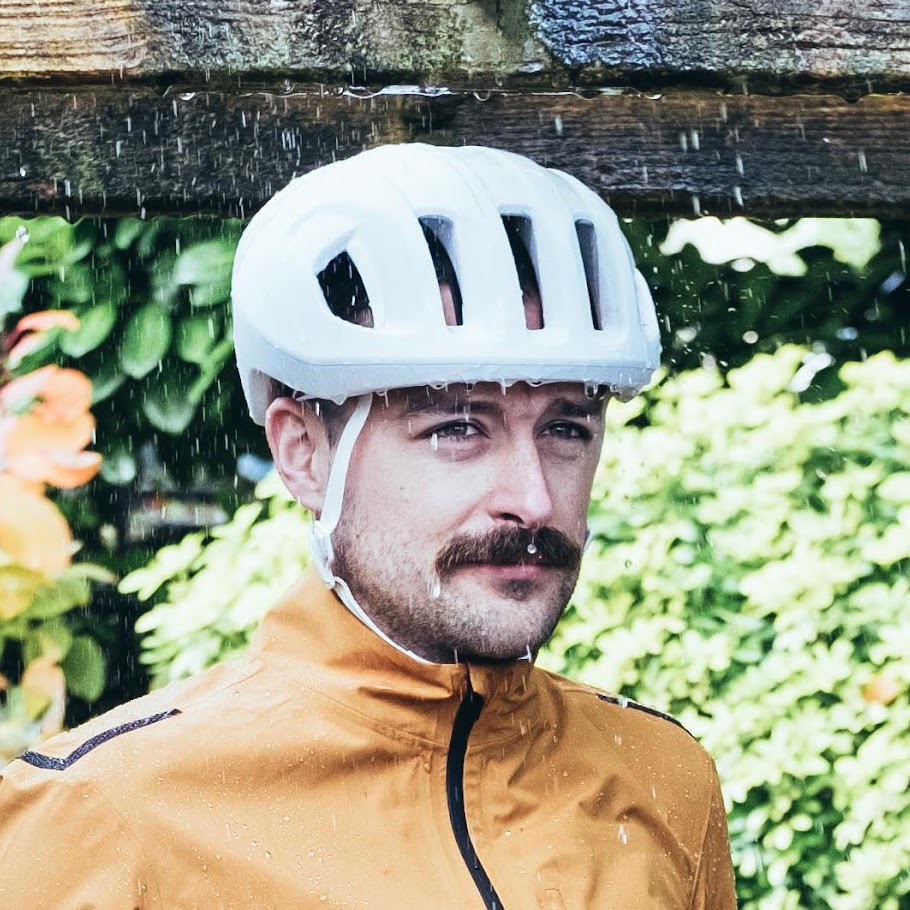
Testing tyres was the first thing I ever did in the cycling industry, and pulling together truly useful tyre guides is something I take seriously, given how important the right setup is to the overall ride experience, especially when it comes to riding off-road. I am constantly swapping tyres to see what works and what doesn't, always run tubeless, and as I never ride indoors it means I can really get to grips with what works in the worst conditions as well as on lovely, dry gravel.
The latest race content, interviews, features, reviews and expert buying guides, direct to your inbox!

Will joined the Cyclingnews team as a reviews writer in 2022, having previously written for Cyclist, BikeRadar and Advntr. He’s tried his hand at most cycling disciplines, from the standard mix of road, gravel, and mountain bike, to the more unusual like bike polo and tracklocross. He’s made his own bike frames, covered tech news from the biggest races on the planet, and published countless premium galleries thanks to his excellent photographic eye. Also, given he doesn’t ever ride indoors he’s become a real expert on foul-weather riding gear. His collection of bikes is a real smorgasbord, with everything from vintage-style steel tourers through to superlight flat bar hill climb machines.